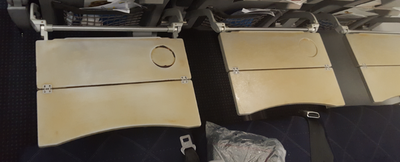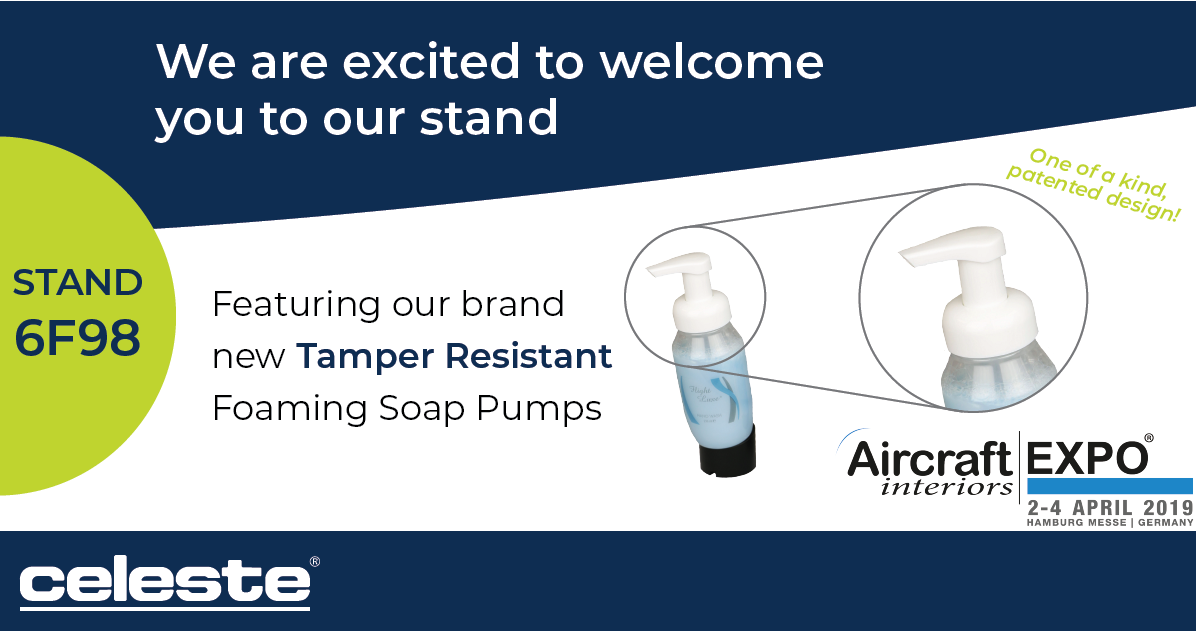|
In a previous post, we discussed Chemical Compatibility with Thermoplastics in the aerospace industry, with a focus on commercial aviation and our test methods and results. Now, we want to expand on the issue to explore the suppliers we have worked with to ensure our end users (airlines) have access to the best combination of components and cleaning products to provide their customers with a superior passenger experience and to ensure component/system reliability.
2 Comments
The Aircraft Interiors Expo in Hamburg is next week! We are excited to announce the debut of our new Tamper Resistant Foaming Soap pumps! With our patented design, you can eliminate…
✅ the risk of soap contamination, ✅ unwanted dilution of soap, ✅ the risk of passenger misuse or abuse, and ✅ accidental spilling. Be sure to stop by and visit us at Stand 6F98 in Hall B6 to learn more! If you’d like to schedule a meeting, please email [email protected] today. We hope to see you at the Expo!  The first instance of incompatibility between cleaning chemicals and thermoplastics making up aircraft interior components was in 2012. The most obvious problem was the staining occurring on window shades and table trays. The discoloration would turn lightly colored components a dark tea color, negatively impacting the aircraft appearance and airline brand image. Cracking/crazing has occurred less frequently, but affects the functionality of components. After prolonged contact with incompatible cleaning chemicals the thermoplastic gets weaker and more brittle. This leads to cracking/crazing which causes the structural failure of tray table hinges, requiring the complete replacement of the tray tables to restore functionality. |
Archives
May 2020
Categories
All
BLOG SUBSCRIPTION
|
800.447.5775
[email protected]


 RSS Feed
RSS Feed

